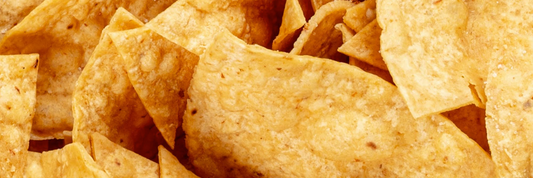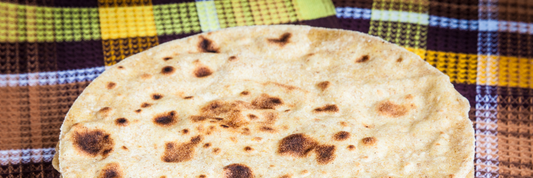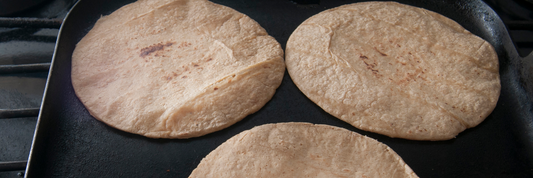Choosing between bleached vs unbleached flour can feel confusing, especially when both look nearly identical on store shelves. Yet, the difference goes beyond appearance. From how they’re processed to the way they behave in cakes, cookies, and breads, each type of flour offers unique advantages for different baking needs. In this guide, we’ll break down what sets them apart, how they impact texture, flavor, and color, and when to use each one for the best results in your kitchen.
What Is Bleached Flour?
Bleached flour is refined wheat flour that has undergone a chemical treatment to speed up the natural aging process. Common bleaching agents include chlorine gas, benzoyl peroxide, or chlorine dioxide. These agents not only whiten the flour but also alter its protein structure, making it softer and finer in texture. The result is a flour that produces baked goods with a lighter color, softer crumb, and more tender bite. Bleached flour is most often used in products where a delicate texture is desired, such as cakes, cookies, and some pastries.

What Is Unbleached Flour?
Unbleached flour is refined wheat flour that has been naturally aged over time rather than chemically treated. This slower oxidation process occurs during storage and exposure to air. Unbleached flour has a slightly denser grain and a creamy off-white color. Because its protein structure remains intact, it offers more gluten strength, making it ideal for yeast breads, pizza dough, and other baked goods where a strong structure and good chew are important. While it may not yield as bright a color as bleached flour, many bakers prefer its more natural production process.

Bleached vs Unbleached Flour – Baking Performance and Texture
Cookies, Brownies, and Quick Breads
Bleached flour produces cookies and brownies with more spread and a softer texture due to its reduced protein strength. The chemical treatment weakens gluten formation, resulting in tender baked goods with a lighter color. Unbleached flour, on the other hand, tends to produce slightly thicker cookies and brownies with a chewier bite and a more robust flavor. Quick breads, like banana bread or muffins, can be made with either type, though bleached flour often yields a more tender crumb.
Cakes and Cupcakes
Bleached cake flour is prized in cake-making because chlorination alters starch and protein behavior, allowing the batter to hold more liquid and sugar. This creates cakes with an ultra-tender, fine crumb and a bright white appearance, especially important in white cakes and sponge cakes. Unbleached flour generally produces cakes with a slightly denser texture and a warmer color tone, which may be preferred for certain butter cakes or pound cakes.
Yeast Breads, Pizza, and Artisan Loaves
For yeast-risen products like sandwich loaves, pizza crusts, and rustic artisan breads, unbleached flour is often the preferred choice. Its higher protein stability supports better gluten development, leading to improved rise, chew, and structure. Bleached flour can still be used but may yield softer, less structured bread, making it less ideal for crusty artisan styles.
Choosing the Best Flour for Pizza: Your Guide to Perfect Dough
Pastry and Pie Crust
In pastry-making, both bleached and unbleached flour can be used successfully. Bleached flour’s lower protein content can result in a slightly more tender pie crust with less shrinkage. Unbleached flour offers a bit more structure, which can be useful when working with intricate lattice tops or hand-shaped pastries. Flavor differences are minimal, though bleached flour may produce a slightly lighter appearance in the finished crust.
Difference Between Bleached And Unbleached Flour: Color, Flavor, and Acidity
Color Differences
Bleached flour produces doughs and baked goods with a brighter, whiter appearance. Unbleached flour, even when fully baked, retains a creamier, more natural off-white tone. In products where color matters visually (like wedding cakes or sugar cookies), bleached flour can help achieve a pristine look.
Flavor and Aroma
Flavor differences between bleached and unbleached flour are subtle but noticeable to experienced bakers. Unbleached flour tends to have a slightly nuttier and fuller wheat flavor, while bleached flour is more neutral. The chlorination process in bleached flour can slightly alter the aroma, making it milder.
Acidity and Taste in Delicate Cakes
Chlorination increases the acidity of bleached flour, which interacts with certain cake recipes to stabilize air bubbles and create a finer crumb. This acidity can also subtly affect flavor, particularly in delicate vanilla or sponge cakes, giving them a cleaner but less wheaty taste compared to cakes made with unbleached flour.

Nutrition and Enrichment – Bleached vs Unbleached Flour
What Enrichment Means for White Flour
Both bleached and unbleached white flours in many countries, including the United States and Canada, are typically enriched to replace some nutrients lost during milling. This enrichment process often includes adding back:
-
Niacin (Vitamin B3) – supports metabolism and skin health.
-
Iron – helps transport oxygen in the blood.
-
Thiamin (Vitamin B1) – essential for carbohydrate metabolism.
-
Riboflavin (Vitamin B2) – supports energy production and cell function.
-
Folic acid – important for cell growth and prevention of certain birth defects.
Enrichment does not restore all nutrients found in whole wheat, particularly fiber, vitamin E, and certain minerals that are concentrated in the bran and germ.
Whole Wheat vs Refined White – Macronutrient and Fiber Context
-
Whole wheat flour (neither bleached nor unbleached) contains the full bran, germ, and endosperm, which means more fiber, higher protein content, and naturally occurring micronutrients.
-
Refined white flour, whether bleached or unbleached, has the bran and germ removed. This process significantly lowers fiber content and slightly reduces protein, but produces a finer texture ideal for certain baked goods.
-
In general, whole wheat flour can have around 12–15% fiber by weight, while refined white flour has 2–3% fiber.
-
The calorie content between whole wheat and refined flour is similar, but whole wheat provides a slower glycemic response due to its fiber content.
Does Bleaching Meaningfully Change Nutrition or Safety Under Regulations?
-
Under U.S. FDA and Canadian Food Inspection Agency guidelines, bleaching agents such as chlorine gas, benzoyl peroxide, or ascorbic acid are approved for use in specific amounts. These agents primarily alter color and baking performance, not macronutrient content.
-
Bleaching does not significantly reduce protein, carbs, or fats, and enrichment ensures vitamin and mineral levels are similar between bleached and unbleached white flour.
-
From a safety perspective, bleaching agents are used in quantities deemed safe for human consumption. The primary differences are in flavor, texture, and performance rather than nutrition.







